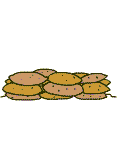
the italian helmet m933
During World War I, Italy used the M15 model for its army.Adrian named FrenchLipman. In 1933 withmussoliniIn power, on November 29, 1934, the new Italian-made helmet was developed and adopted, which was called the modelM933. It was designed by engineerGuido Rossoand it tried to emulate in its shape the helmet used by the ancient Roman legions, even in some corps of the army they incorporated lateral ornamental plumes (Alpini and Bersaglieri).

LOS NUEVOS MODELOS
Con el establecimiento del nuevo gobierno de Mussolini (1922), se empezó a trabajar para un nuevo diseño del casco de combate y que recordara al casco utilizado por las antiguas Legiones romanas, así en 1931 se aprobó el nuevo diseño de casco que recibió la denominación de M931


Con la idea de ir mejorando el casco de combate, y partiendo del diseño del M931, en 1933 se desarrolló y aprobó (29 de noviembre de 1934), el nuevo casco de fabricación italiana, que se denominó el modelo M933. Fue diseñado por el ingeniero Guido Rosso continuando con la idea de emular en su forma al casco usado por las Legiones romanas, incluso en algunos cuerpos del ejército se incorporaron penachos de adorno laterales (Alpini y Bersaglieri).


The new design increased the protection and effectiveness of this previous M931 model, disappearing the crest, which served for ventilation.
At first it was painted with the grey-green color of the Royal Army in a light tone, a tone that began to darken from 1940.
Even with the adoption of the new helmet model, research and work continued to find a better model, giving rise to the model M1934/39, and what was itsold to Greece.
The great novelty is that it incorporates a new, more comfortable lining similar to the German one of the M31 model in terms of the metallic support with straps.



The helmets carried a frontal emblem painted in black that indicated the weapon or the body to which it was assigned, in the center of the emblem the number of the Regiment to which it belonged was indicated, and if they carry a cross it means "school":

1 - Marshals, generals and staff officers
2 - Infantry
3 and 4 -carabinieri
5 - Grenadiers
6 -Bersaglieri
7- Alpine troops
8 - Skydiver
9 to 13 - Cavalry
14 - Field Artillery
15 - Sardinia Artillery Regiment
16 - Horse Artillery
17 - Light artillery
18 - Mountain artillery
19 and 20 - Heavy artillery
21 -Coastal artillery
22 - Anti-aircraft artillery
23 - Specialist
24 - Alpine Specialist
25 - Miner Specialist
26 - Railway Specialist
27 - Pontoon Engineers
28 and 29 - Communications specialist
30 - Chemical service
31 and 32 - Car park.
33 to 37 - Tanks
38 - Motorized artillery
39 - Motorcycle Company
40 - Transport of animals
41 - Disciplinary Company
42 - Finance
43 - Fencing Master
44 to 47 - Health
48 - Bold (arditi)

el modelo 34/39 (modelo griego)
El casco modelo 934 pretendía sustituir al 933 y fue rehusado por el ejército italiano. Grecia se intereso durante su desarrollo y los cascos fabricados de este modelo fueron exportados a Grecia hasta que se iniciaron las hostilidades entre Italia y Grecia, con la invasión italiana de Albania en 1940.
El casco es más ligero que el modelo 933, se fabricó en acero al Ni, con un grosor de 1,1 mm y un peso de 1-1,1 kg. El resultado fue un casco más comodo para el soldado pero al mismo tiempo más endeble y con menor protección.
Las guarniciones de los cascos exportados a Grecia, se fabricó en Grecia y llevan el sello de fabricación correspondiente.






